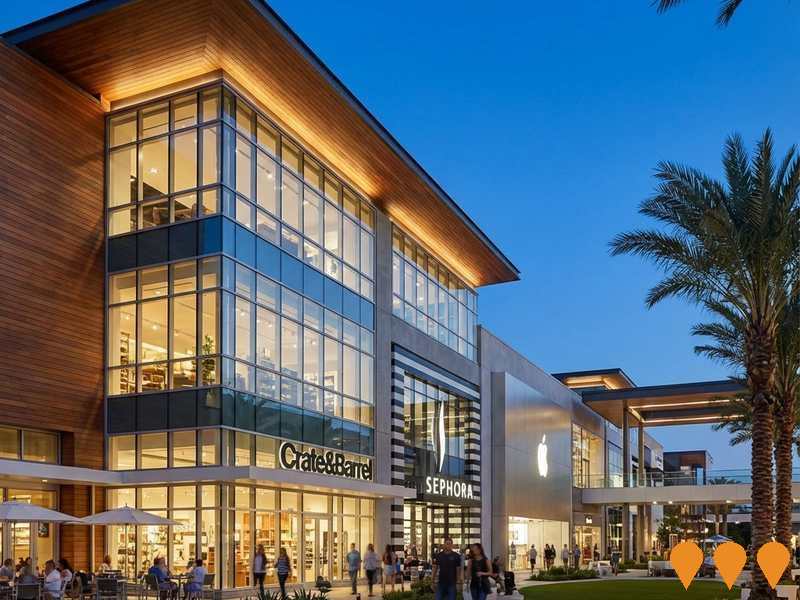Chart Color Schemes
est. as @ -- *
ABS ERP | -- people | --
2021 Census | -- people
Sales Activity
Curious about local property values? Filter the chart to assess the volume and appreciation (including resales) trends and regional comparisons, or scroll to the map below view this information at an individual property level.
Find a Recent Sale
Sales Detail
Population
An assessment of population growth drivers in The Entrance reveals an overall ranking slightly below national averages considering recent, and medium term trends
The Entrance's population is approximately 16,192 as of November 2025. This figure represents an increase of 353 people since the 2021 Census, which recorded a population of 15,839. The growth is inferred from ABS estimates: 16,155 in June 2024 and 87 validated new addresses since the Census date. This results in a population density of 1,168 persons per square kilometer. Over the past decade, The Entrance has shown resilient growth with a compound annual growth rate of 0.8%, exceeding the SA4 region's average. Overseas migration drove this growth, contributing approximately 75.6% of overall population gains.
AreaSearch uses ABS/Geoscience Australia projections for each SA2 area, released in 2024 with a base year of 2022. For areas not covered by this data, NSW State Government's SA2 level projections from 2022 (base year: 2021) are used. Growth rates by age group are applied to all areas for years 2032 to 2041. By 2041, the population is projected to decline by 786 persons. However, specific age cohorts like the 75-84 group are expected to grow, with an increase of 691 people anticipated in this cohort.
Frequently Asked Questions - Population
Development
Recent residential development output has been above average within The Entrance when compared nationally
The Entrance has seen approximately 100 new homes approved annually over the past five financial years, totalling 504 homes. As of FY26, 56 approvals have been recorded. On average, 0.5 new residents arrive per year for each new home built between FY21 and FY25, indicating that supply meets or exceeds demand. The average construction value of these new homes is $409,000.
This financial year, $2.3 million in commercial development approvals have been recorded, reflecting the area's predominantly residential nature. Compared to Greater Sydney, The Entrance has a 47.0% higher construction rate per person over the past five years, offering reasonable buyer options while sustaining property demand. New building activity comprises 32.0% detached dwellings and 68.0% attached dwellings, marking a shift from the current housing pattern of 47.0% houses. This trend may indicate diminishing developable land availability and responds to evolving lifestyle preferences and housing affordability needs. The location has approximately 151 people per dwelling approval, suggesting a low-density market.
With population expected to remain stable or decline, The Entrance may experience reduced pressure on housing, potentially presenting buying opportunities.
Frequently Asked Questions - Development
Infrastructure
The Entrance has strong levels of nearby infrastructure activity, ranking in the top 40% nationally
Nine projects identified by AreaSearch are expected to impact the area, significantly influencing its performance through changes in local infrastructure, major projects, and planning initiatives. Key projects include Vera's Water Garden Upgrade, The Grant McBride Baths Upgrade, Lakeside Shopping Centre Redevelopment, and The Entrance Waterfront Plaza Accessible Playspace. A detailed list of these projects is provided below for further reference.
Professional plan users can use the search below to filter and access additional projects.
INFRASTRUCTURE SEARCH
 Denotes AI-based impression for illustrative purposes only, not to be taken as definitive under any circumstances. Please follow links and conduct other investigations from the project's source for actual imagery. Developers and project owners wishing us to use original imagery please Contact Us and we will do so.
Denotes AI-based impression for illustrative purposes only, not to be taken as definitive under any circumstances. Please follow links and conduct other investigations from the project's source for actual imagery. Developers and project owners wishing us to use original imagery please Contact Us and we will do so.
Frequently Asked Questions - Infrastructure
Greater Warnervale Structure Plan
Long-term strategic framework adopted by Central Coast Council in July 2024 to guide sustainable growth in the Greater Warnervale area over the next 20+ years. The plan supports population growth from approximately 20,000 to 57,000 residents through new residential release areas, two new neighbourhood centres, employment lands, community facilities and environmental protection measures.

Central Coast Desalination Plant
A proposed 30 ML/day reverse osmosis desalination plant to be built adjacent to the existing Toukley Sewage Treatment Plant. The project will provide a climate-independent water supply for the Central Coast region during severe drought, using a direct ocean intake between Jenny Dixon Beach and Pelican Point Beach and discharging brine via the existing Norah Head ocean outfall. The plant is designed to improve water security and system resilience for up to 250,000 residents.
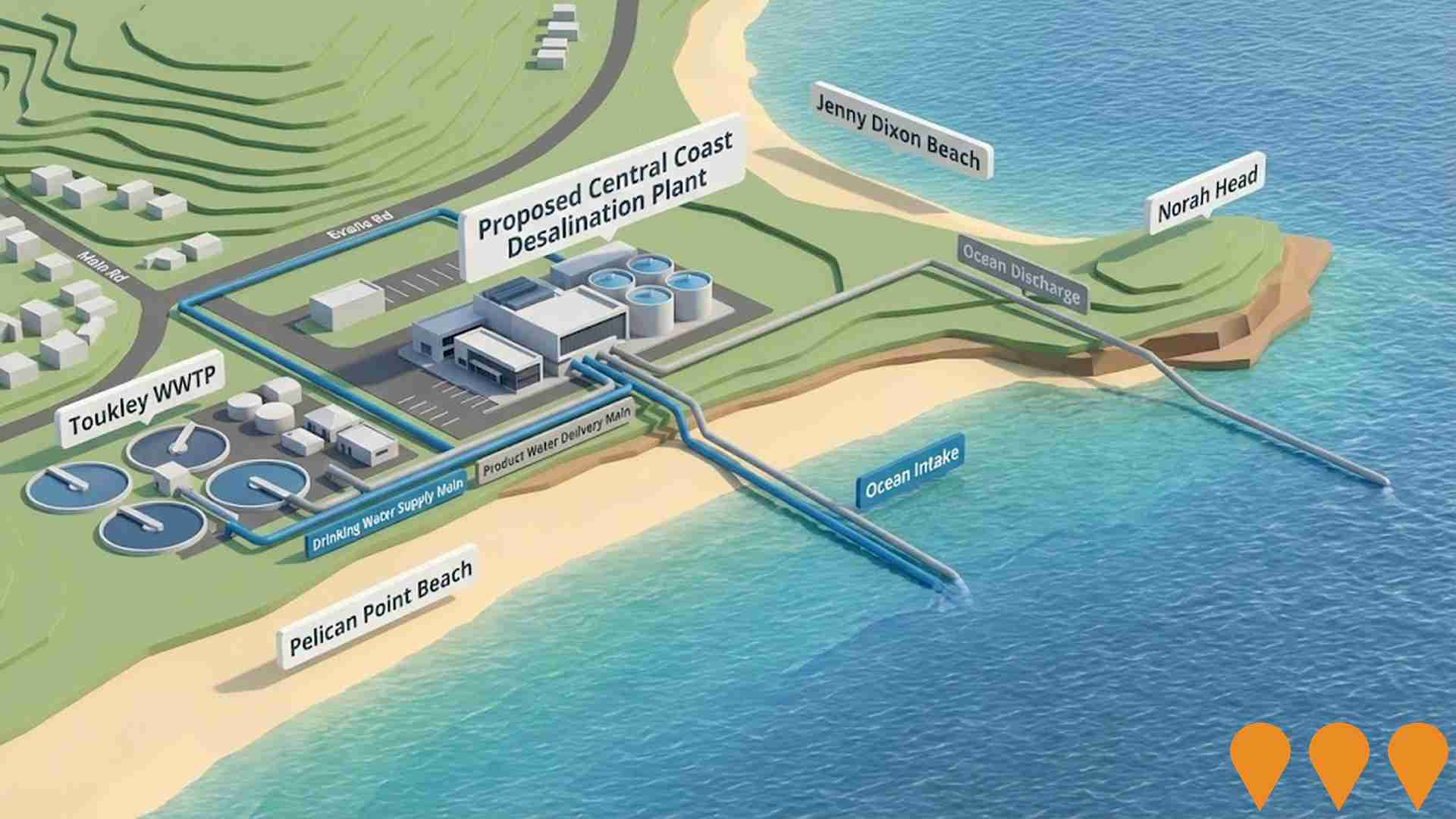
Warnervale Water and Sewer Infrastructure Program
Central Coast Council's multi-stage water and sewer infrastructure program to support growth in the Warnervale area. Includes the completed Mardi to Warnervale Pipeline (2023), ongoing sewer rising main upgrades, water and sewer network extensions in Warnervale Town Centre, and a major upgrade and expansion of Mardi Water Treatment Plant to increase capacity.
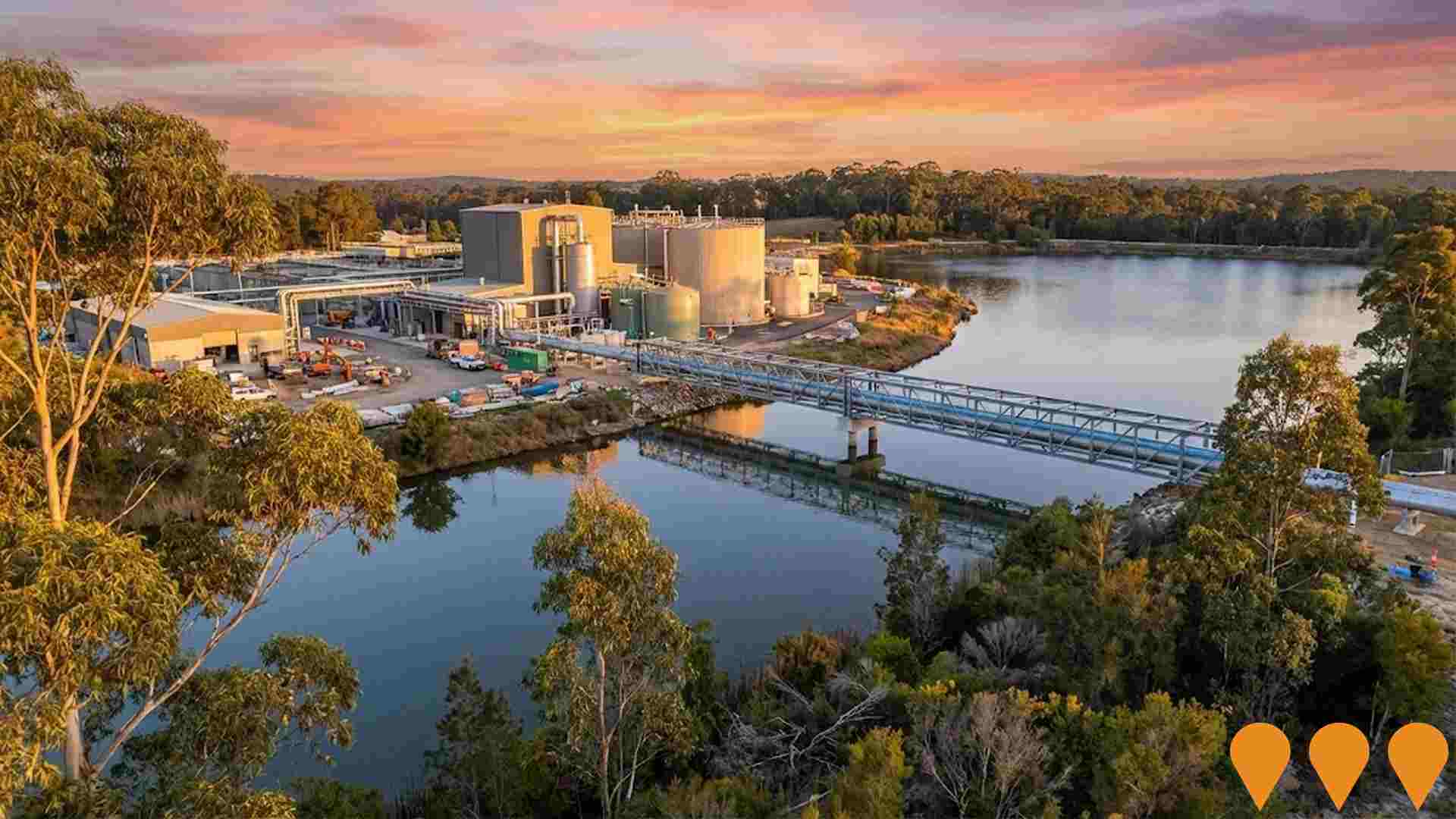
Wyong Hospital Redevelopment
The $200 million Wyong Hospital Redevelopment (completed 2021-2022) delivered a new six-storey clinical services building (Block H) with expanded emergency department, ICU, paediatrics, medical imaging (including the hospital's first MRI), additional inpatient beds, and a medical assessment unit; plus refurbishment of existing facilities adding operating theatre capacity, expanded medical day unit, transit lounge, and cancer day unit expansion. The project significantly increased healthcare capacity for the Central Coast community.
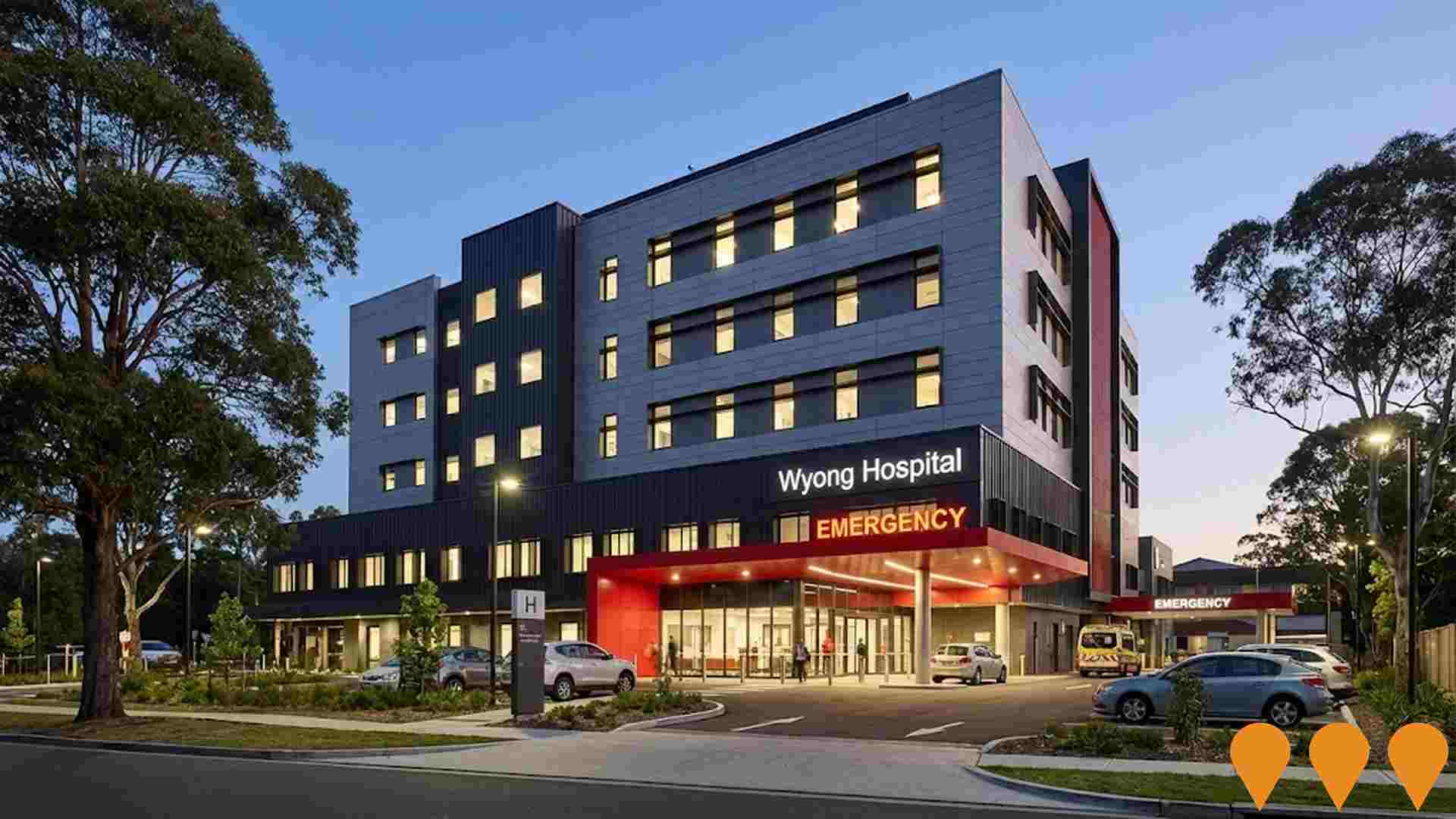
Tumbi Umbi/Killarney Vale Priority Growth Precinct (Planning Proposal)
Central Coast Council-identified priority growth precinct for future medium-density housing and mixed-use development along Wyong Road to accommodate population growth. The project is a Planning Proposal for a Strategic Growth Corridor, which is a key component of the region's overall planning framework to deliver housing, jobs, and infrastructure. It is currently in the Planning stage, consistent with the Central Coast Regional Plan 2036.
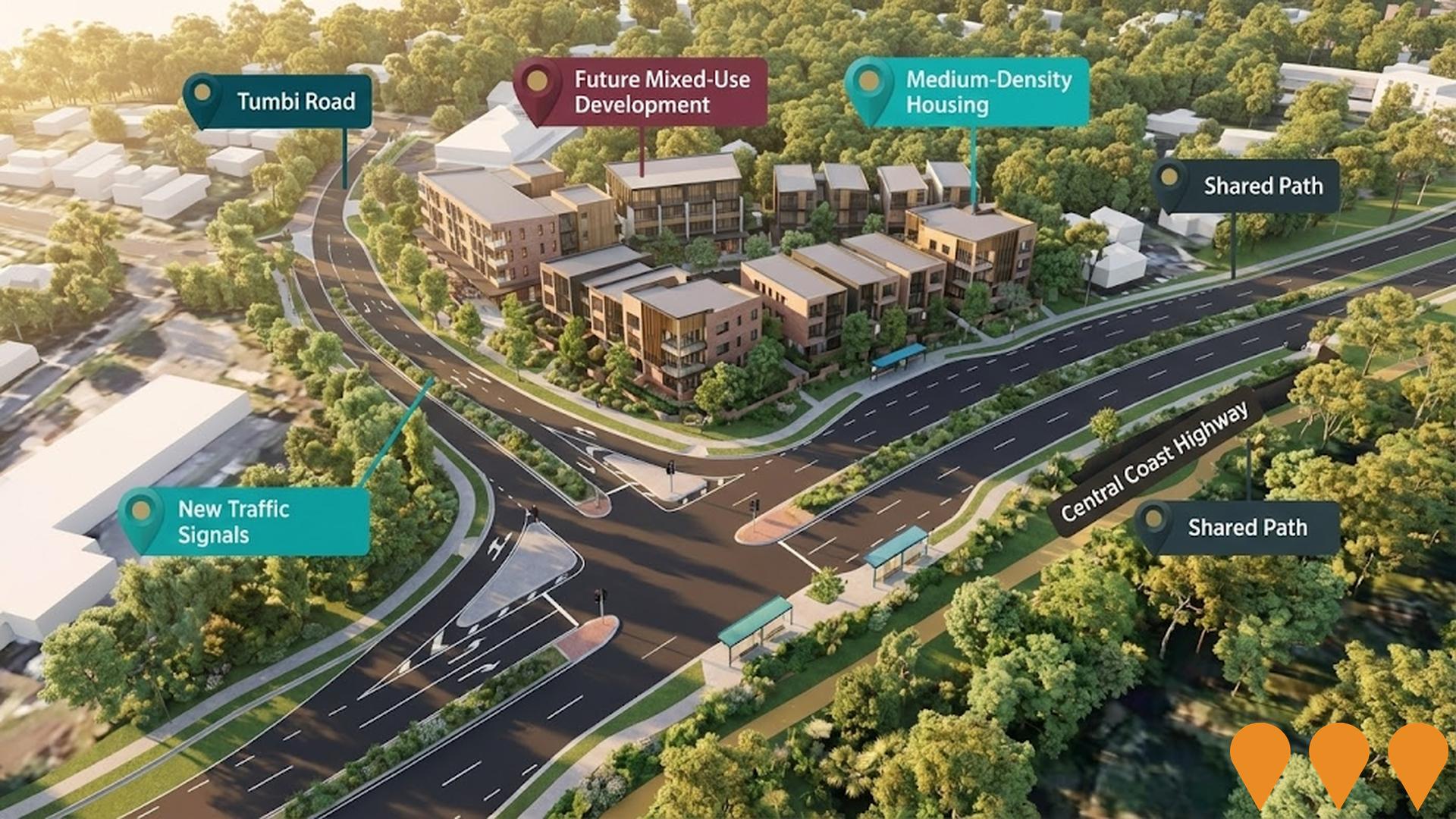
Killarney Vale Masterplan Community - Eastern Release Area
A large master-planned residential community on the eastern side of Wyong Road featuring over 400 completed homes, parks, and community facilities developed by multiple builders.
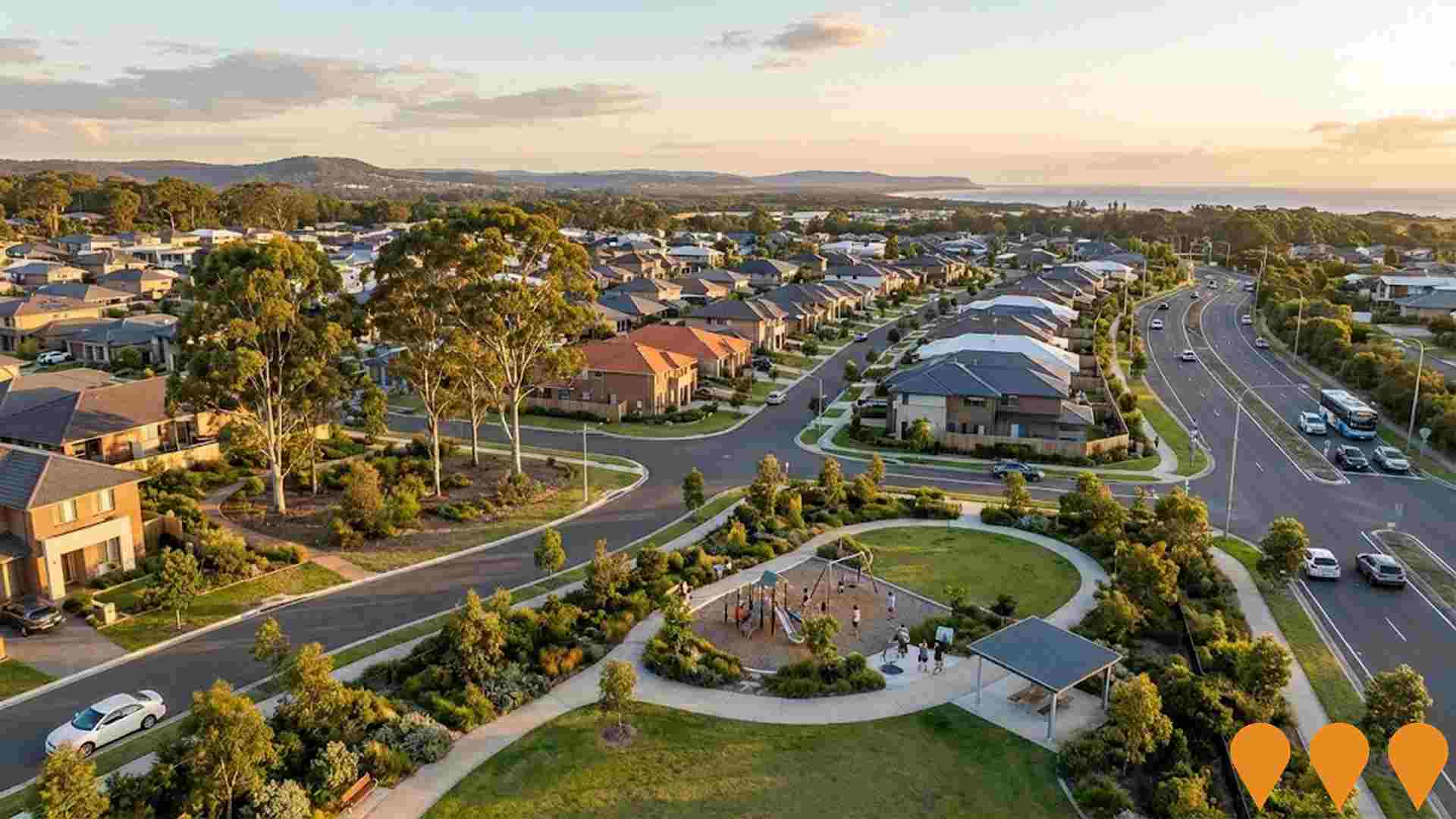
Red Bus Planning Proposal - 682A Coleridge Road Rezoning
Rezoning of a 5.26ha former bus depot to enable housing. The proposal seeks to rezone the majority of the site from SP2 Infrastructure to R1 General Residential and a small portion to C3 Environmental Management; apply a 450m2 minimum lot size, 9.5m building height and 0.6:1 FSR to R1 land; and include 'transport depot' as an additional permitted use to allow ongoing bus operations until redevelopment. The Gateway determination (May 2024) indicates capacity for up to 70 dwellings and requires exhibition with a site-specific DCP.

Vera's Water Garden Upgrade
Upgrading Vera's Water Garden to a zero-depth design to improve safety, accessibility, and reduce ongoing maintenance.

Employment
The labour market performance in The Entrance lags significantly behind most other regions nationally
The Entrance's workforce consists of skilled individuals with notable representation in essential services sectors. The unemployment rate was 6.1% as of June 2025, showing a growth of 2.1% over the previous year.
As of that date, 7,167 residents were employed while the unemployment rate stood at 1.9% above Greater Sydney's rate of 4.2%. Workforce participation in The Entrance was lower at 49.5%, compared to Greater Sydney's 60.0%. Key industries for employment among residents include health care & social assistance, construction, and retail trade. The area specializes particularly in construction, with an employment share of 1.6 times the regional level.
Conversely, professional & technical services showed lower representation at 4.7%, compared to the regional average of 11.5%. Analysis based on AreaSearch data from SALM and ABS indicates that during the year to June 2025, employment levels increased by 2.1% while labour force grew by 2.7%, resulting in an unemployment rate rise of 0.5 percentage points. In comparison, Greater Sydney saw employment grow by 2.6%, labour force expand by 2.9%, and unemployment rise by 0.3 percentage points. Jobs and Skills Australia's national employment forecasts from May 2025 project a growth of 6.6% over five years and 13.7% over ten years for national employment. Applying these projections to The Entrance's employment mix suggests local growth of approximately 6.6%% over five years and 13.8% over ten years, though this is a simple weighting extrapolation for illustrative purposes and does not account for localized population projections.
Frequently Asked Questions - Employment
Income
Income figures position the area below 75% of locations analysed nationally by AreaSearch
AreaSearch's latest postcode level ATO data for financial year ending June 2022 shows median income in The Entrance was $47,094 and average income was $58,556. This is lower than Greater Sydney's median income of $56,994 and average income of $80,856. Based on Wage Price Index growth of 12.61% since financial year ending June 2022, estimated median income in The Entrance as of September 2025 is approximately $53,033 and estimated average income is $65,940. According to the Census conducted on August 10, 2021, incomes in The Entrance fall between the 12th and 21st percentiles nationally for households, families, and individuals. Income distribution shows that 26.4% of residents earn $800 - $1,499 weekly, compared to the broader area where 30.9% earn $1,500 - $2,999 weekly. Housing affordability pressures are severe in The Entrance, with only 78.2% of income remaining after housing costs, ranking at the 9th percentile nationally.
Frequently Asked Questions - Income
Housing
The Entrance displays a diverse mix of dwelling types, with a higher proportion of rental properties than the broader region
The Entrance's dwelling structure, as per the latest Census, consisted of 47.0% houses and 53.0% other dwellings (semi-detached, apartments, 'other' dwellings), compared to Sydney metro's 87.2% houses and 16.7% other dwellings. Home ownership in The Entrance was at 34.7%, similar to Sydney metro, with the rest being mortgaged (21.3%) or rented (44.0%). The median monthly mortgage repayment was $1,950, higher than Sydney metro's average of $1,900. Median weekly rent in The Entrance was $365, lower than Sydney metro's $385. Nationally, The Entrance's mortgage repayments were higher at $1,950 compared to the Australian average of $1,863, while rents were lower at $365 versus the national figure of $375.
Frequently Asked Questions - Housing
Household Composition
The Entrance features high concentrations of lone person households and group households, with a lower-than-average median household size
Family households constitute 58.2% of all households, including 17.8% couples with children, 25.7% couples without children, and 13.7% single parent families. Non-family households comprise the remaining 41.8%, with lone person households at 37.9% and group households making up 3.8%. The median household size is 2.1 people, which is smaller than the Greater Sydney average of 2.5.
Frequently Asked Questions - Households
Local Schools & Education
Educational outcomes in The Entrance fall within the lower quartile nationally, indicating opportunities for improvement in qualification attainment
The area's university qualification rate is 18.4%, significantly lower than Greater Sydney's average of 38.0%. Bachelor degrees are the most common at 13.0%, followed by postgraduate qualifications (3.4%) and graduate diplomas (2.0%). Vocational credentials are prevalent, with 40.7% of residents aged 15+ holding them; advanced diplomas account for 11.6% and certificates for 29.1%. A total of 24.9% of the population is actively pursuing formal education: 8.1% in primary, 6.8% in secondary, and 3.3% in tertiary education.
The Entrance's three schools have a combined enrollment of 1,755 students, serving typical Australian school conditions (ICSEA: 985) with balanced educational opportunities. There are two primary and one secondary school, providing 10.8 school places per 100 residents, below the regional average of 13.6. Some students may attend schools in nearby areas.
Frequently Asked Questions - Education
Schools Detail
Nearby Services & Amenities
Transport
Transport servicing is moderate compared to other areas nationally based on assessment of service frequency, route connectivity and accessibility
The Entrance has 94 active public transport stops, all of which are bus stops. These stops are served by 77 different routes that together facilitate 1,827 weekly passenger trips. Residents have excellent access to these stops, with an average distance of 179 meters to the nearest one.
On average, there are 261 trips per day across all routes, which translates to approximately 19 weekly trips per stop.
Frequently Asked Questions - Transport
Transport Stops Detail
Health
Health performance in The Entrance is well below average with prevalence of common health conditions notable across both younger and older age cohorts
Health data indicates significant health challenges in The Entrance. Both younger and older age groups have a notable prevalence of common health conditions.
Approximately 49% of the total population (~7,950 people) has private health cover, which is lower than the national average of 55.3%. The most prevalent medical conditions are arthritis (11.2%) and mental health issues (9.9%). However, 60.1% of residents report being completely clear of medical ailments, compared to 61.5% in Greater Sydney. In The Entrance, 29.0% of residents are aged 65 and over (4,689 people), higher than the 22.3% in Greater Sydney. Health outcomes among seniors present some challenges but perform better than the general population in health metrics.
Frequently Asked Questions - Health
Cultural Diversity
The Entrance ranks below the Australian average when compared to other local markets across a number of language and cultural background related metrics
The Entrance had a cultural diversity level below average, with its population comprising 88.1% citizens, 84.5% born in Australia, and 92.1% speaking English only at home. Christianity was the predominant religion, accounting for 59.4%, compared to 56.2% across Greater Sydney. The top three ancestry groups were English (30.0%), Australian (28.7%), and Irish (9.8%).
Notably, Maltese representation was higher than average at 1.2%, while Australian Aboriginal was lower at 3.8%. Samoan representation was also lower than average at 0.2%.
Frequently Asked Questions - Diversity
Age
The Entrance hosts an older demographic, ranking in the top quartile nationwide
The Entrance's median age is 48 years, significantly higher than Greater Sydney's average of 37 years and Australia's national average of 38 years. The age profile shows that those aged 65-74 are particularly prominent, making up 15.0% of the population, which is higher than both Greater Sydney's 12.9% and Australia's national average of 9.4%. Conversely, the 25-34 age group comprises only 9.7%, lower than Greater Sydney's 16.8%. Since 2021, the 75 to 84 age group has grown from 8.3% to 10.3%, while the 5 to 14 cohort has declined from 9.3% to 8.4%. Population forecasts for The Entrance in 2041 indicate substantial demographic changes, with the 75 to 84 age group projected to grow by 37%, adding 612 residents to reach 2,274. Senior residents aged 65 and above will drive all population growth, underscoring trends of demographic aging. However, population declines are projected for the 65 to 74 age cohort (-8.9%) and the 45 to 54 age cohort (-10.3%).
